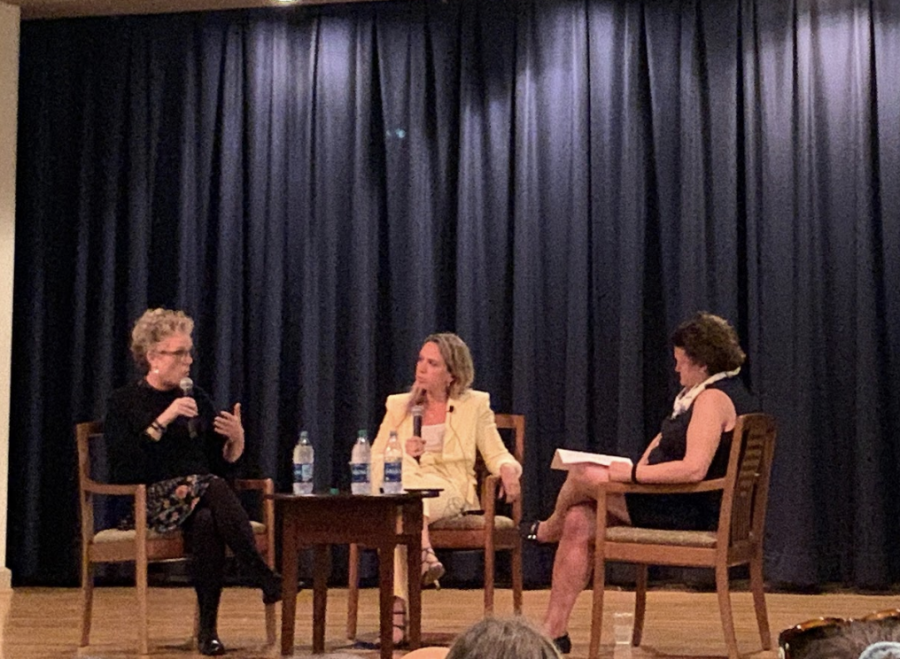Reynolds program brings groundbreaking New York Times investigative reporters
The Times journalists detailed their work exploring the underbelly of immense power
Craig (left) and Abrams (middle) spoke about covering the most powerful people in the world. Photo by Grace Mamon, ’22.
October 1, 2019
In May, the New York Times published an investigation exposing President Donald Trump’s over $1 billion in business losses over a decade. And on Thursday, Sept. 19, the female journalist behind the story visited campus to talk about her groundbreaking work.
“[The story] has really changed the narrative about Donald Trump,” Susanne Craig said. “It’s amazing from a reporter’s standpoint that we could start a project about someone who’s already in the White House and add to his biography.”
The Pulitzer Prize-winning business journalist was joined at a forum hosted by the Donald W. Reynolds Foundation’s Distinguished Journalists Program by her colleague Rachel Abrams. Professor Alecia Swasy, business journalism professor and Reynolds Chair, moderated the discussion, occasionally showering praise on both Times reporters.
Swasy said that Craig was able to do something that “eludes even Congress”: she got her hands on 10 years of IRS transcripts documenting Trump’s tax returns.
Despite the fact that the Times’ investigations into Trump’s taxes and family’s fraudulent finance practices did not bring an indictment against the president, Craig found immense value in breaking down some of the myths surrounding Trump’s legendary business practices.
Craig’s team will release a follow-up article in May, and she estimates that their work on the story will continue for at least another year.
But she didn’t start her career investigating the president of the United States. Craig started out covering policemen in Ontario. Later, she made the jump to the Wall Street Journal, where she fell in love with business journalism, which she said is about more than just numbers.“It’s about people and power and how they intersect,” Craig told the mostly filled Stackhouse Theater.
Abrams, who launched her career at Variety despite not being able to recognize most celebrities (which she credits to her lack of television consumption growing up), also has experience uncovering the secrets of those in power. At the New York Times, she was a member of the team that exposed the allegations of sexual misconduct against big-time executive Harvey Weinstein.
Abrams also wrote about Leslie Moonves, former chief executive of CBS, and how he obstructed an investigation into misconduct claims from numerous women.
Abrams spoke to the difficulty of building relationships with vulnerable sources. Reporters must be trustworthy and accurate in order to give their sources a voice, she said.
“Our only power comes from telling facts,” Abrams said. “We are not here to advocate for a policy change or to ‘go get someone.’ We’re here to tell a story in the most compelling way possible. People can advocate from our story.”
She also discussed making space in unfamiliar news territory. Since Abrams didn’t know much about celebrities, she started covering the economics of filmmaking at Variety.
Craig and Abrams have worked together at the Times for five years. Despite their different beats, they’ve become close.
“Sue has never been too busy to give me advice,” Abrams said.




